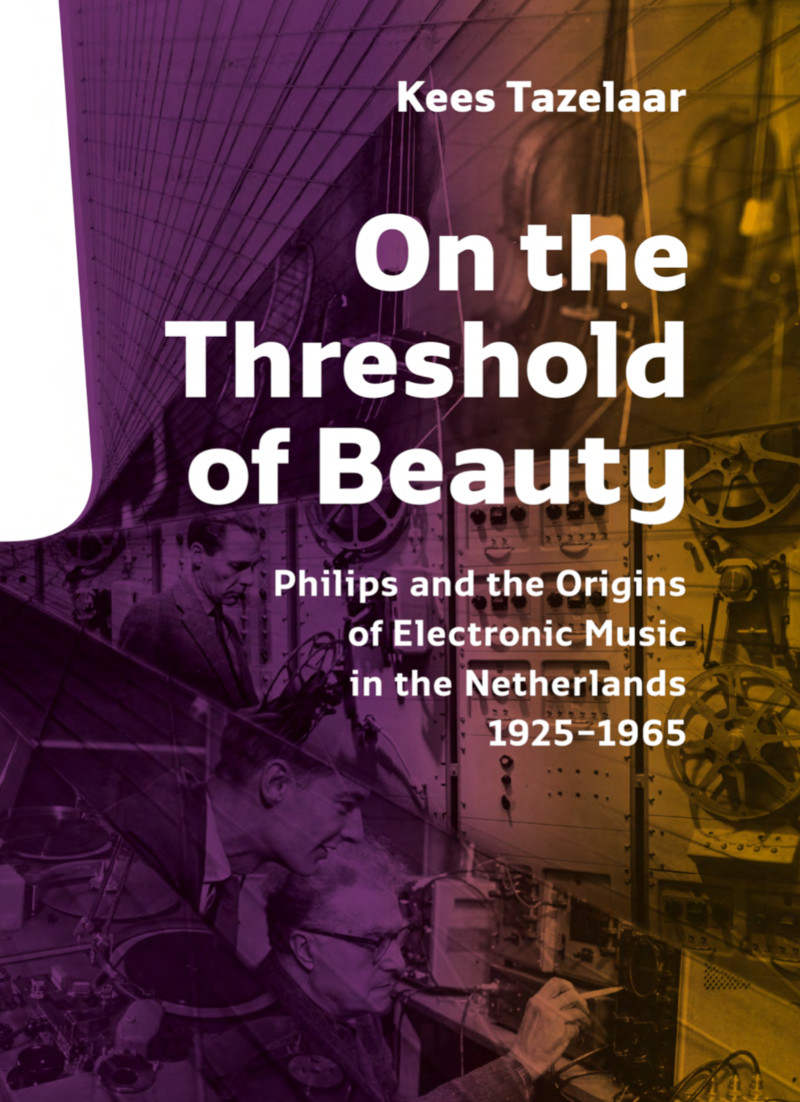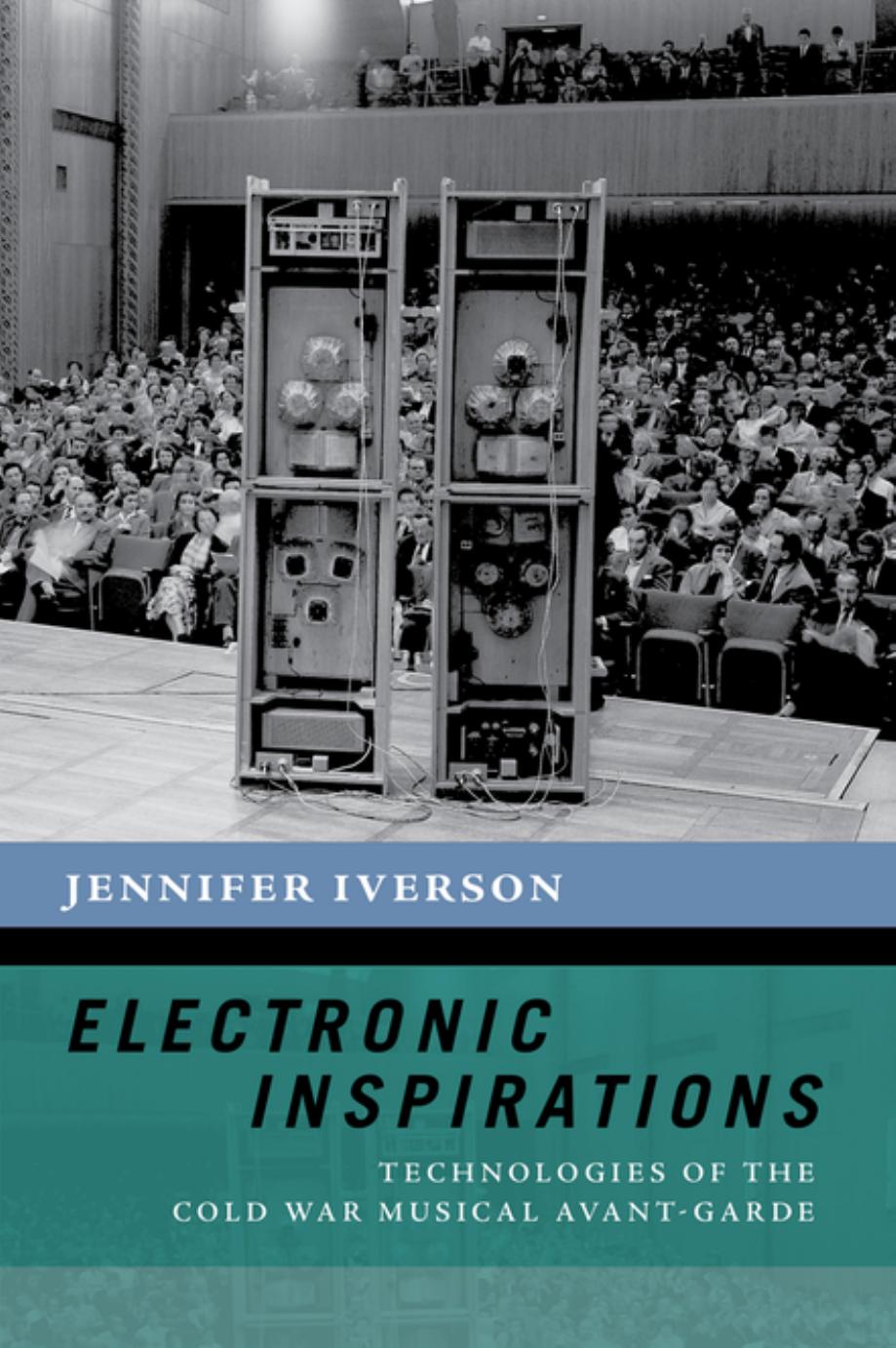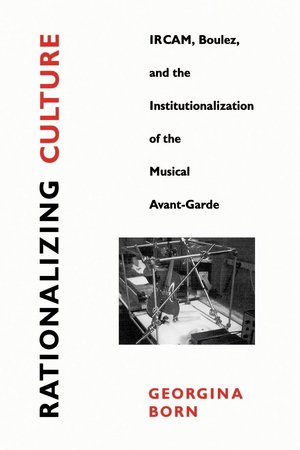Kees Tazelaar: On the Threshold of Beauty: Philips and the Origins of Electronic Music in the Netherlands, 1925-1965 (2013–)
Filed under book | Tags: · composition, electroacoustic music, electronic music, music, music history, musique concrète, netherlands, serialism

“The first studio for electronic music in the Netherlands was not a radio studio — as in so many other countries — it was located at the research laboratory of Philips (also known at NatLab). From 1930 it had been part of the electro-acoustic research program which combined technical, economic, sociologic and musical aspects. The first compositions realized in the Philips studio were thus test-cases. Parallel to this research, other departments of Philips, purely focused at marketing, developed plans for the Philips Pavilion at the World Expo of 1958 at Brussels. Philips planned a demonstration for the general public of the possibilities of sound and light, but through the engagement of Le Corbusier, Iannis Xenakis and Edgar Varèse this project took a strong turn towards the avant-garde. The result, now considered a milestone in the history of electronic music, was in many ways more experimental than the music produced at the Philips research laboratory.
The story of electronic music at the Philips research laboratory and the Philips Pavilion are the first two main strands of the book On the Threshold of Beauty, in which Kees Tazelaar for the first time unravels the course of events, and debunks some of the myths around the Philips Pavilion. A third historical strand concerns the needs of composers, who desired to learn how to compose in the new medium. In 1957 Walter Maas and the CEM set up an electronic studio at the Technical University of Delft for this purpose, which fused with the Philips studio in 1960, and afterwards moved to the University of Utrecht. Tazelaar writes about the works realized at this studio (STEM), as well as about the activities of the ground-breaking German composer Gottfried Michael Koenig who comes to the Netherlands in 1961 and in 1964 takes over the direction of STEM.”
Publisher V2_, Rotterdam, 2013
Revised digital edition, 2020
Open access
ISBN 9789462080652, 9462080658
314 pages
HT Raviv
Reviews: René van Peer (Eindhovens Dagblad, NL, 2013), Hubert Steins (MusikTexte, 2014, DE), Maarten Brandt (OpusKlassiek, NL, 2014), Aurelio Cianciotta (Neural, 2014), Gregory Taylor (Cycling74, 2015).
Book website
Publisher
Publisher (digital edition)
WorldCat
Jennifer Iverson: Electronic Inspirations: Technologies of the Cold War Musical Avant-Garde (2018)
Filed under book | Tags: · avant-garde, cold war, collaboration, cultural history, electroacoustic music, electronic music, information theory, music history, technology

“Cold War electronic music—made with sine tone and white-noise generators, filters, and magnetic tape—was the driving force behind the evolution of both electronic and acoustic music in the second half of the twentieth century. Electronic music blossomed at the Westdeutscher Rundfunk (WDR [West German Radio]) in Cologne in the 1950s, when technologies were plentiful and the need for cultural healing was great. Building an electronic studio, West Germany confronted the decimation of the “Zero Hour” and began to rebuild its cultural prowess. The studio’s greatest asset was its laboratory culture, where composers worked under a paradigm of invisible collaboration with technicians, scientists, performers, intellectuals, and the machines themselves. Composers and their invisible collaborators repurposed military machinery in studio spaces that were formerly fascist broadcasting propaganda centers. Composers of Cold War electronic music reappropriated information theory and experimental phonetics, creating aesthetic applications from military discourses. In performing such reclamations, electronic music optimistically signaled cultural growth and progress, even as it also sonified technophobic anxieties. Electronic music—a synthesis of technological, scientific, and aesthetic discourses—was the ultimate Cold War innovation, and its impacts reverberate today.”
Publisher Oxford University Press, New York, 2018
The New Cultural History of Music series
ISBN 9780190868192, 0190868198
xi+303 pages
Reviews: Lucie Vágnerová (Integral, 2019), Ted Gordon (Current Musicology, 2019), James Davis (Music & Letters, 2019), Maurice Windleburn (Sound Studies, 2020).
PDF (32 MB)
Comment (0)Georgina Born: Rationalizing Culture: IRCAM, Boulez, and the Institutionalization of the Musical Avantgarde (1995)
Filed under book | Tags: · anthropology, avant-garde, computer music, electroacoustic music, ethnography, music

“Anthropologist Georgina Born presents an ethnography of the renowned Institut de Recherche et de Coordination Acoustique/Musique (IRCAM) in Paris. As a year-long participant-observer, Born studied the social and cultural economy of an institution for research and production of avant-garde and computer music. She gives a unique portrait of IRCAM’s composers, computer scientists, technicians, and secretaries, interrogating the effects of the cultural philosophy of the controversial avant-garde composer, Pierre Boulez, who directed the institute until 1992.
Born depicts a major artistic institution trying to maintain its status and legitimacy in an era increasingly dominated by market forces, and in a volatile political and cultural climate. She illuminates the erosion of the legitimacy of art and science in the face of growing commercial and political pressures. By tracing how IRCAM has tried to accomodate these pressures while preserving its autonomy, Born reveals the contradictory effects of institutionalizing an avant-garde.”
Publisher University of California Press, Berkeley, CA, 1995
ISBN 0520202163, 9780520202160
xvi+390 pages
Reviews: Tia DeNora (Am J of Sociology, 1996), Eduardo de la Fuente (Culture and Policy, 1996), Simon Emmerson (Review: J Royal Musical Association, 1997), Timothy Dowd (Contemporary Sociology, 1997), Paul D. Lopes (American Ethnologist, 1998), Elizabeth Hinkle-Turner (Computer Music J, 1999).
PDF (17 MB)
Comment (0)
